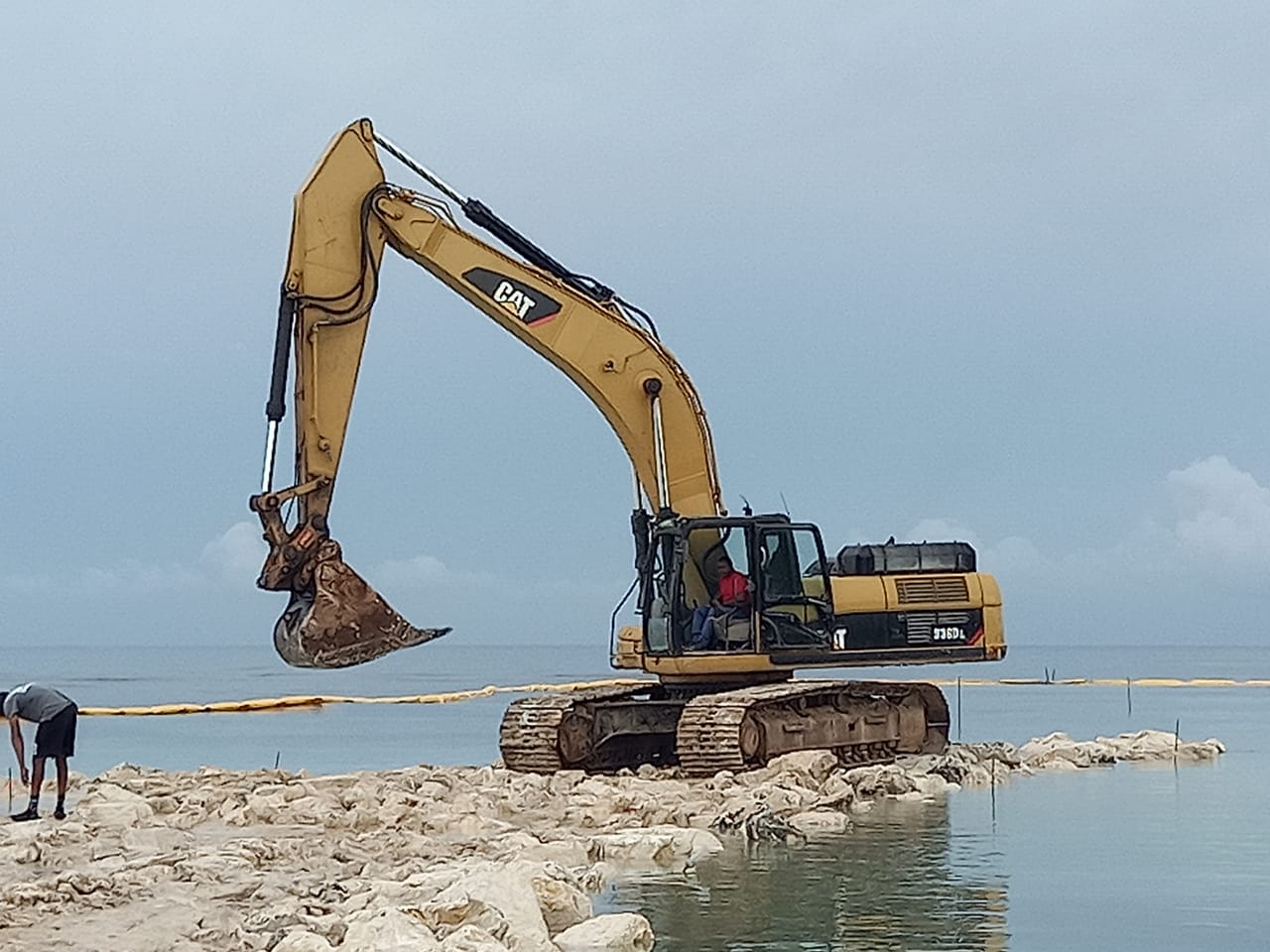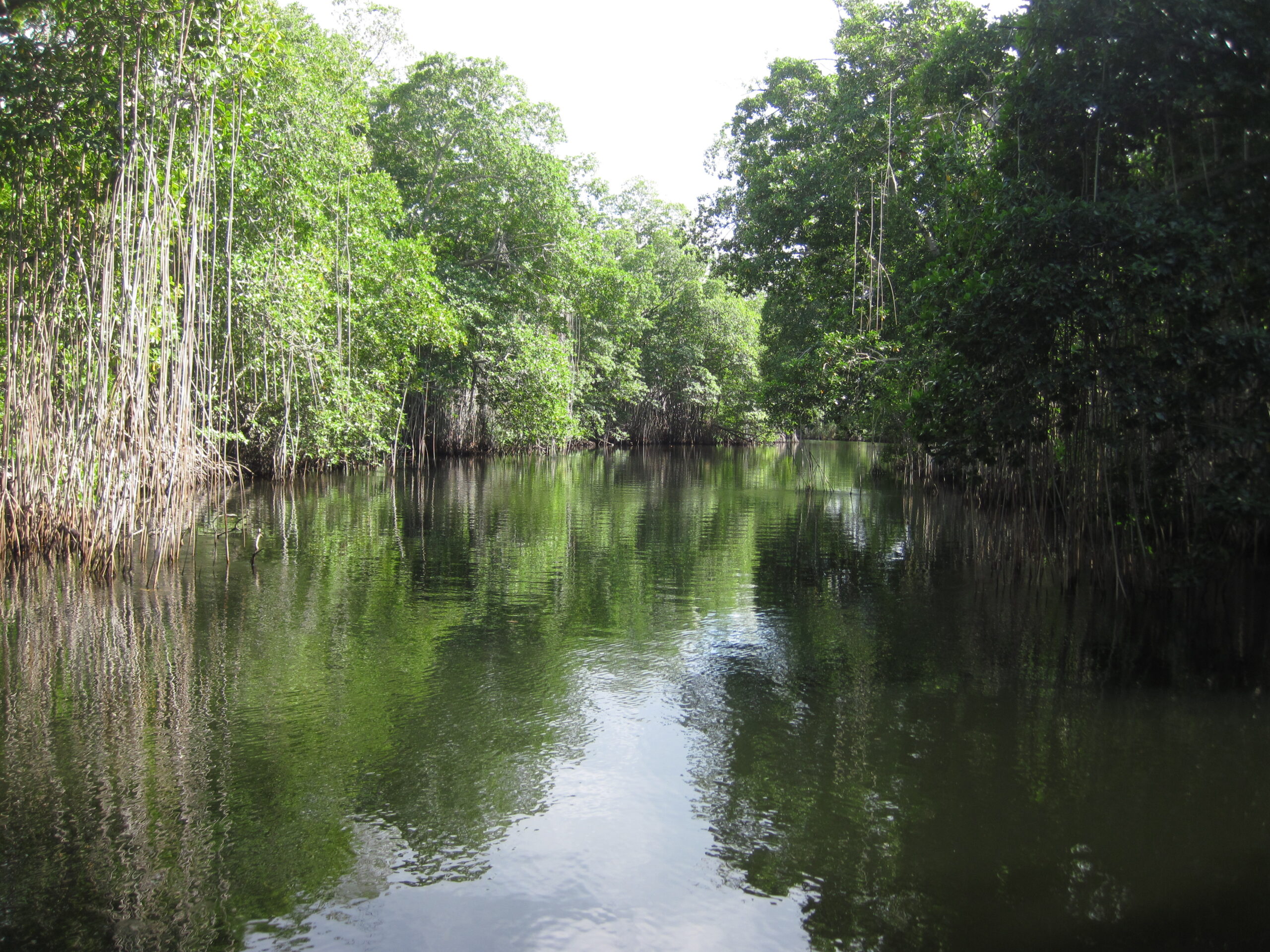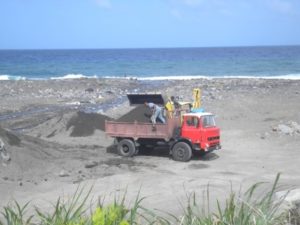 As coastal scientists and environmentalists know, beaches are constantly changing. Sand is in motion, ebbing and flowing with currents, tides, and wave action. But these changes occur naturally. When humans interfere, illegally taking sand from one beach to use elsewhere, the impact can be broad and even catastrophic. The problem exists globally, with the United Nations estimating that 50 billion tonnes of sediment is removed illegally each year from coasts, riverbeds, deltas, and lakes. It hits home hard in the Caribbean.
As coastal scientists and environmentalists know, beaches are constantly changing. Sand is in motion, ebbing and flowing with currents, tides, and wave action. But these changes occur naturally. When humans interfere, illegally taking sand from one beach to use elsewhere, the impact can be broad and even catastrophic. The problem exists globally, with the United Nations estimating that 50 billion tonnes of sediment is removed illegally each year from coasts, riverbeds, deltas, and lakes. It hits home hard in the Caribbean.
“We are very serious about our sand dunes,” explains Andre Reid, Watershed Area Management Coordinator in the Ecosystems Management Branch of Jamaica’s National Environment and Planning Agency (NEPA). During severe meteorological events, these sand dunes act as a barrier that can protect residents and infrastructure along the shoreline. The dunes and nearshore beach are significant in many ways.
“The first thing that comes to my mind is the aesthetic value and cultural importance,” Mr. Reid explains gently. “Typically, Jamaicans are very much attached to their beaches.” But he quickly hones in on the many serious ecological and geological threats that come from the illegal removal of sand known as sand mining. “From a scientific standpoint, once you start looking at the loss of beach, you immediately think about the associated losses to the marine environment. All beaches are habitats for many and varied species, from large sea turtles to microorganisms.”
Unnatural Effects
An accelerated loss of sand can severely impact the foreshore or intertidal zone, causing a rapid change in the morphology, or shape of the beach, and affecting how waves break on the shore. It can cause excessive erosion in one area, potentially creating an erosional “hot spot”, with sand accumulation in another area. Heavy accretion potentially could block light and affect seagrasses and organisms living on the sea floor. Changes in how sediments naturally move along the shore can cause the sometimes undesirable impact of the formation of barriers, such as spits, blocking drainage canals and inlets.
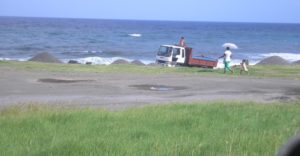 The most recently reported case of sand mining in Jamaica occurred in Great Bay/Treasure Beach, endangering dunes estimated to be 5,000 years old. Fortunately, residents alerted regulators, including the Mines and Geology Division for which, Mr. Reid says, NEPA is grateful. NEPA actively monitors beaches around the island and in the case of Great Bay/Treasure Beach, the telltale signs were there. “Once they (sand miners) go in, they go in with equipment and make quite a drastic change to the morphology, we’re able to detect quickly that something has taken place,” Mr. Reid explains. The penalties for illegally removing, or mining, sand are severe: under the Natural Resources Conservation Authority (NRCA) Act, a fine of $50,000 and/or up to two years in prison. Under the Quarries Control Act, the fine is $ 1 million and up to 12 months imprisonment.
The most recently reported case of sand mining in Jamaica occurred in Great Bay/Treasure Beach, endangering dunes estimated to be 5,000 years old. Fortunately, residents alerted regulators, including the Mines and Geology Division for which, Mr. Reid says, NEPA is grateful. NEPA actively monitors beaches around the island and in the case of Great Bay/Treasure Beach, the telltale signs were there. “Once they (sand miners) go in, they go in with equipment and make quite a drastic change to the morphology, we’re able to detect quickly that something has taken place,” Mr. Reid explains. The penalties for illegally removing, or mining, sand are severe: under the Natural Resources Conservation Authority (NRCA) Act, a fine of $50,000 and/or up to two years in prison. Under the Quarries Control Act, the fine is $ 1 million and up to 12 months imprisonment.
The Demand for Sand
The problem of sand mining exists not only in this region of white sand beaches, but in coastal and riverine areas throughout the world. In some cases, the stolen sand is used to refill other beaches, and in others, it’s used for commercial purposes such as an ingredient to make concrete. With growing urbanisation in many parts of the world, sand is being removed more quickly than nature can replace it.
Sand forms as rocks break down over geologic time. Often, these rocks have travelled from upland and made their way to the shore via rivers and streams. Here in the Caribbean, the skeletal remains of dead corals add to the whiteness of sand because of the calcium carbonate they contain. This sand has a high concentration of salt which, Mr. Reid warns, makes it unsuitable for construction since the salt can erode steel composites. But if the sand is mined illegally, it’s unlikely, Mr. Reid adds, that proper “checks and balances” have been put in place.
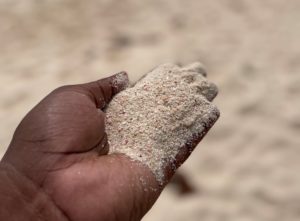
In parts of Asia sand mining has been so severe that it is visible from satellites above. In one town in India, regulators blame the failure of a bridge’s foundation on the huge extraction of sand from the river below.
Scientists are calling for more research into how sand is being used and how recycled material could help fill the growing need that urbanisation has brought. Better mapping could illustrate where excess sand exists and how to safely and legally remove it. It is a situation where every grain matters.
